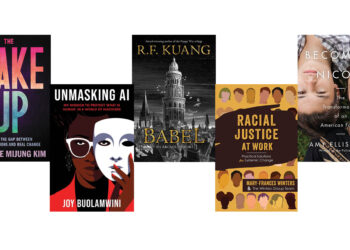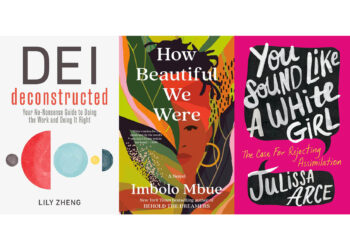Web 1.0 was about shoveling documents online. Web 2.0 is about moving people and their contributions online. Are e-books in phase 1.0 or 2.0?
Judging from a recent article by Sara Nelson in Publisher’s Weekly, e-books are firmly in phase 1.0. I don’t think Sara herself is (she exudes a pretty clear, forward-thinking mind), but the genre seems to be in 1.0-ville. Let me explain.
The forms and limitations of any technology’s first adaptation to a new technology tend to mimic the familiar. Hence, Web 1.0 consisted of pages and shoveled documents. Calling an HTML rendering of database elements and links a “page” made it approachable and understandable. It let people migrate with confidence and a working metaphor. Now, in Web 2.0, online is about interaction, social media, applications, and transactions. Documents are only a part.
The world of e-books seems to be in a similar early phase, with a lot of time being spent, like in the Web 1.0 world, comparing the experience to the prior experience, noting the limitations and other hallmarks of a disruptive technology:
- Markets are not known, nor can they be known
- Core customers reject it initially
- Its weaknesses are really its strengths
- Profits and prices are lower
- It’s perceived as underperforming
- Its markets are viewed by incumbents as insignificant
- Managers hesitate to recommend it in established organizations (for the reasons above)
- Yet, it shifts the basis for competition
- The technology is simpler, cheaper, and more reliable
This framework is paraphrased from Clayton Christensen‘s book, “The Innovator’s Dilemma.” As soon as I read that book, I was hooked. His theory seems to hold up very well, and in setting after setting.
Now, how might disruption apply to e-books? Let’s do a little reverse-engineering and imaginative fast-forwarding.
Using the bullets above, the ones that jump out the most are:
- Its weaknesses are really its strengths
- Markets are not known, nor can they be known
So, what are the “weaknesses” of e-books? Well, aficionados of standard books claim that it’s harder to leaf through an e-book, harder to mark up an e-book, not as fun and tactile to hold (and smell) an e-book, you can’t cite them very easily right now, and illustrations and other heavily formatted material (typefaces and complex layouts) are compromised.
How do these become strengths?
- The lack of pages means that type can be variably sized. Also, e-books don’t take up physical space. So, you lose leafing, but you gain variable type sizes and save storage space and clutter. Voila! No pages means flexible reading and less mess, so a weakness becomes two strengths.
- Not as fun to hold? Again, it doesn’t take up space, so you only need one thing — you don’t have to haul 5 books, which is part of “holding.” And the act of holding is about something defined and finite. This becomes a strength when you realize, like with the Kindle, that the same form factor can hold variable content — updated, serialized, subscribed. The weakness is it’s not finite and defined. The strength is the same. Many strengths emanate. — less to carry, better information, more information. For authors, there is a true creative opportunity with the e-book!
- As for citation, in the future, citations in the traditional sense will not matter as much as links. With connected e-books like the Kindle, linking will become increasingly the norm. Citation will evolve into linking. A weakness (can’t cite it) becomes a strength (but it can support links, which are better than citations).
- As to the layouts, there will be some books that won’t work on e-books, like illuminated manuscripts or coffee table books. Scrolls don’t work in the book form, so this is more about adapting content. Not every new technology absorbs its predecessor, but some disrupt.
As for the markets, what will the markets for e-books be? Judging from the back problems, costs, and complaints of students with their bulging backpacks, I’ll bet that textbooks are a prime place for disruption. The average price for a textbook has reached $53. The used book market undercuts the new book market, driving up those prices. And now, the used book market is so hot that it is seeing large price increases on average.
Textbooks are bulky and heavy. They are only needed for a short time, in most cases, and then can be disposed of. They are mainly used for assigned reading, and other material can be better rendered with online features (animations, images, videos). A linked, connected, wireless e-book seems ready to tear through this market.
So, my e-book prediction is that while disruption will occur slowly in the realm of fiction and popular reading, it will truly catch fire in the textbook market.
Discussion
4 Thoughts on "E-books: A Textbook Case"
The biggest “feature” the Kindle is lacking — the thing that keeps it as a 1.0, or 1.5 technology — is that it’s not networked. More exactly, it uses the Net only as a way to deliver content, and not as a way to connect readers and link ideas. A truly networked ebook would be disruptive technology and not just a digitized version of paper-based publishing.
Echoing David’s point above, what I wish I could see is greater linking between texts in the sense of a system recognizing the ties between a book containing the text of a novel and a book containing essays examining various aspects of that novel. The hyperlinks should help the user navigate across the two. At present such links occur in larger information environments, services such as those provided by an Elsevier or a Wolters Kluwer, but not in e-books aimed at the individual reader/researcher.
re. citation difficulties: of course we will link rather than quoting, instead of using footnotes. but for the sake of flow, in our writing we will want to speak the words of others using our own voices and contexts, and links are still a visual distraction. how could that little bright blue thing in the middle of a bunch of black text *not* be? plus, we still haven’t totally overcome the problem of *dead* links.
so at least for the transitional period, why not number paragraphs? page-breaks have *always* been strange and arbitrary, even in the world of pure print. that’s why students were always instructed to all purchase the same edition of a textbook: so page numbers would always have the same meaning. line-numbering is conventional in the publication of literature; unfortunately, it is just as arbitrary and mess-up-able as page numbering. but units inherent to the text were numbered, we’d be in decent shape, because paragraph breaks do not typically change with text layout. yeah, the idea seems like ‘phase 0.5’ or lower; but if one considers line-numbering of verse, and the fine-tuned numbering of passages in scripture, and then compares it with systems of tagging and indexing used today, the idea expresses a data-management principle which, while useful from the first moment of its inception, was also many centuries *ahead* of its time.
![Reblog this post [with Zemanta]](http://img.zemanta.com/reblog_e.png?x-id=72152462-3aa1-453d-8046-5d6011a99c0f)


